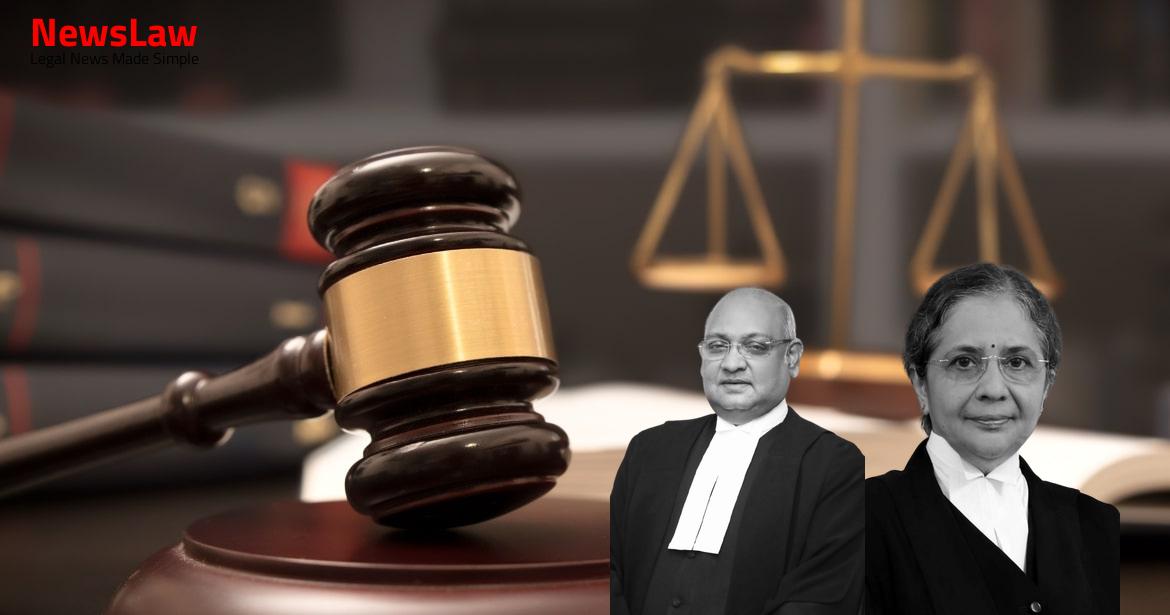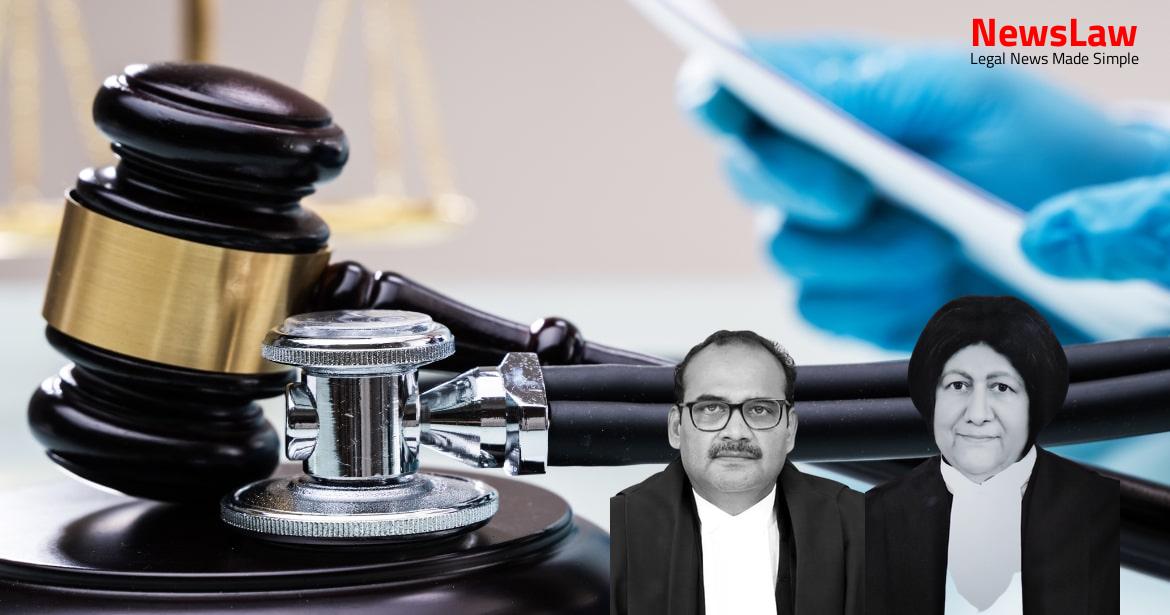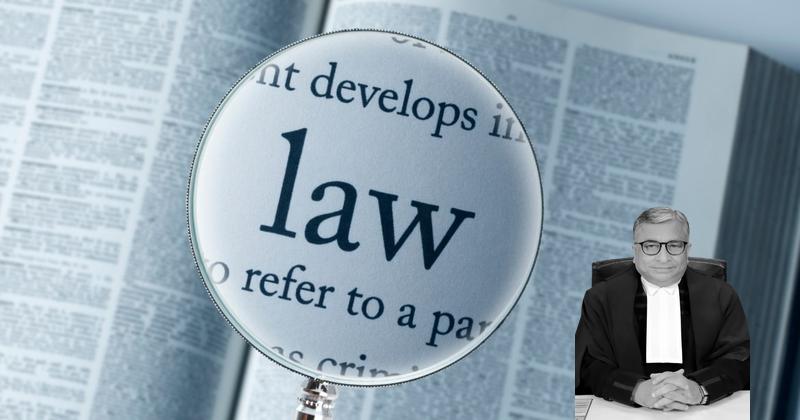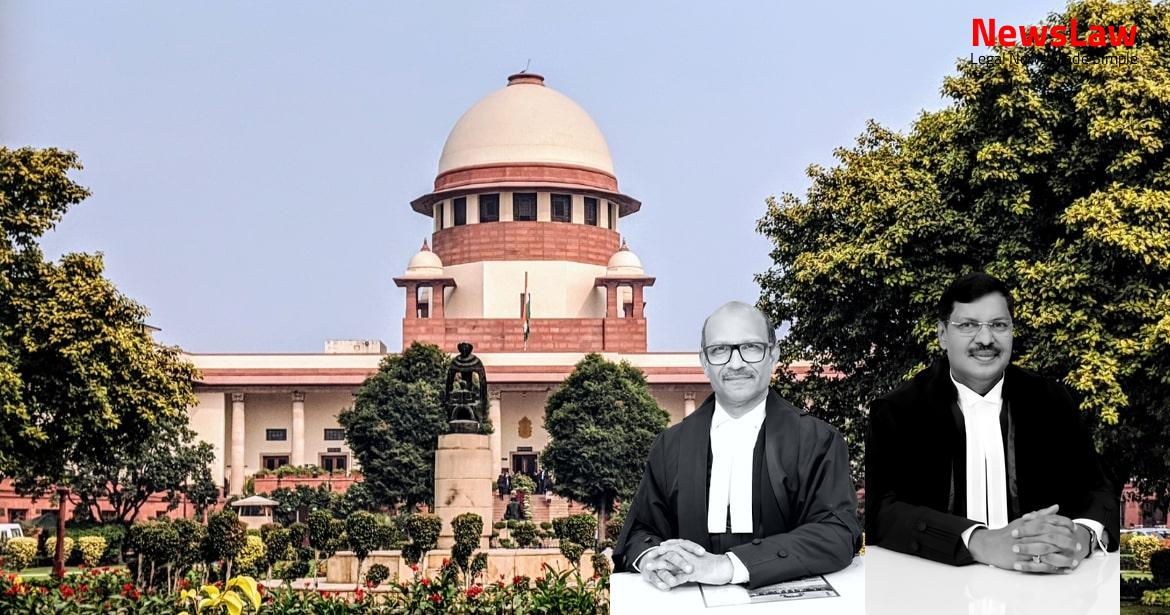Explore a legal case where the conviction of the accused was called into question due to the court’s in-depth analysis of witness statements and the prosecution’s evidence. Discover the nuances of the legal process and the complexities of criminal law proceedings in this thought-provoking analysis.
Facts
- Informant identifies the man on the ground as his younger brother Amar Tanti by the light of an electric lamp.
- Menoka Tati, the wife of PW-2 and step-mother of the deceased, witnessed the incident.
- Investigation conducted by PW-10 Dipen Paul.
- Injuries on the deceased were described by PW-7 Dr. Homeswar Sharma.
- Witnesses PW-2 and PW-3 testified to the occurrence, with PW-2 falling unconscious upon seeing profuse bleeding from the deceased.
- Other private witnesses did not support the prosecution’s case.
- Accused appellants were convicted and sentenced following the trial.
- Statements of various individuals acquainted with the incident were recorded.
- Nature of offense led to the case being committed to the Court of Sessions.
- Accused appellants pleaded not guilty and were examined under Section 313 of the Code of Criminal Procedure, 1973.
- Parents of the deceased, PW-2 and PW-3, were witnesses to the incident.
- Deceased died of the injuries sustained in the incident.
- The defence admitted that there was sufficient light at the place of occurrence to identify the accused persons.
- The High Court rejected the contentions of the appellants and confirmed that P.W.2 and P.W.3 were the eyewitnesses to the occurrence.
- It was established that the accused intended to cause the death of the deceased and one of them prevented his escape while the other attacked him.
- The Trial Court found that the accused, Dibakar and Babul, attacked the deceased with a deadly weapon at a market in the presence of many witnesses.
- There was no support for the prosecution case from other individuals present at the market.
- The Trial Court confirmed that there was no ground for false implication by the eyewitnesses, P.W.2 and P.W.3.
Also Read: Ensuring Maintenance Rights: Court’s Legal Analysis
Arguments
- Incident took place at about 7-8 p.m. on 30.09.1999
- FIR lodged only on 10 a.m. on 01.09.1999 by PW-1, brother of the deceased
- Conviction of the appellants based on testimony of PW-2 and PW-3
- Statements of PW-2 and PW-3 carry contradictions and improbabilities
- Unnatural conduct of parents of deceased ignored by learned Sessions Judge
- PW-2 stated that they went home, had a meal, and went to bed after the incident
- Such conduct unreasonable when their son was facing assault by accused-appellants armed with ‘dao’
- Learned counsel for appellants argued that Sessions Court and High Court ignored significant shortcomings in prosecution case
- The delay in filing the FIR was unexplained and cast doubt on the prosecution’s case.
- The statements of PW-2 and PW-3 were not deemed totally unreliable by the State’s counsel.
- Concurrent findings based on the statements of PW-2 and PW-3 were supported by the State’s counsel.
- The State’s counsel argued that the deceased’s parents would not be unconcerned about their son if he had been badly injured.
- The lack of support from independent witnesses for the prosecution’s story was highlighted by the State’s counsel.
Also Read: Analyzing Evidentiary Value in Criminal Conviction Case
Analysis
- The Trial Court and the High Court arrived at concurrent findings of fact.
- PW-2 and PW-3 testified to a quarrel between the deceased and accused, where the deceased was unarmed and the accused were armed.
- There were doubts raised regarding the reliability of PW-2 and PW-3 as eye-witnesses.
- Independent witnesses did not support the prosecution case.
- No suggestion of inimical relationships between witnesses and accused.
- The defence did not challenge the witnesses’ credibility on false evidence grounds.
- The Trial Court’s assumption that witnesses had no reason to implicate anyone other than the real culprit was deemed unsatisfactory.
- The accused persons were well identified by the prosecution witnesses.
- The prosecution failed to prove the case beyond reasonable doubt.
- An erroneous approach by the Trial Court and High Court led to miscarriage of justice.
- The High Court considered the deceased’s history of quarrels to explain witnesses’ actions post-assault.
- The FIR was lodged the next morning, raising questions about witness conduct.
- The defence suggested the deceased’s intoxication and past quarrels as reasons for witnesses’ behavior.
- The defence did not provide any excuse or exception for the accused persons’ actions.
- It was a clear case of murder with no prior grudge between the parties.
- The Trial Court and High Court findings are subject to interference due to lack of conclusive evidence
- Deceased had multiple injuries, but evidence does not conclusively prove appellants as sole perpetrators
- Difficult to establish appellants’ guilt beyond reasonable doubt based on prosecution evidence
Also Read: Legal Authority and Res Judicata in Representation Matter
Decision
- The judgment and order dated 17.09.2009, passed by the Guahati High Court in Criminal Appeal No 79 of 2006, along with the judgment and order dated 16.02.2006, passed by the Sessions Judge, Cachar at Silchar in Sessions Case No 37 of 2003, are set aside.
- The appellants are acquitted and if they are in custody, they are to be released immediately.
- The appeal has succeeded and is allowed.
Case Title: DIBAKER NUNIA Vs. THE STATE OF ASSAM (2022 INSC 886)
Case Number: Crl.A. No.-000962-000962 / 2011



